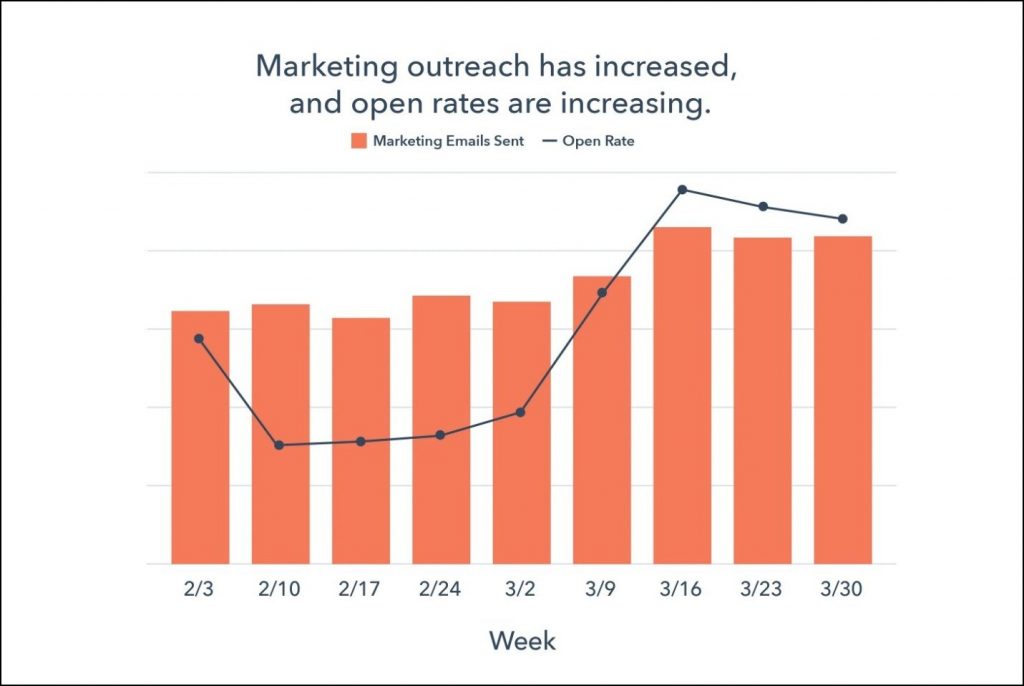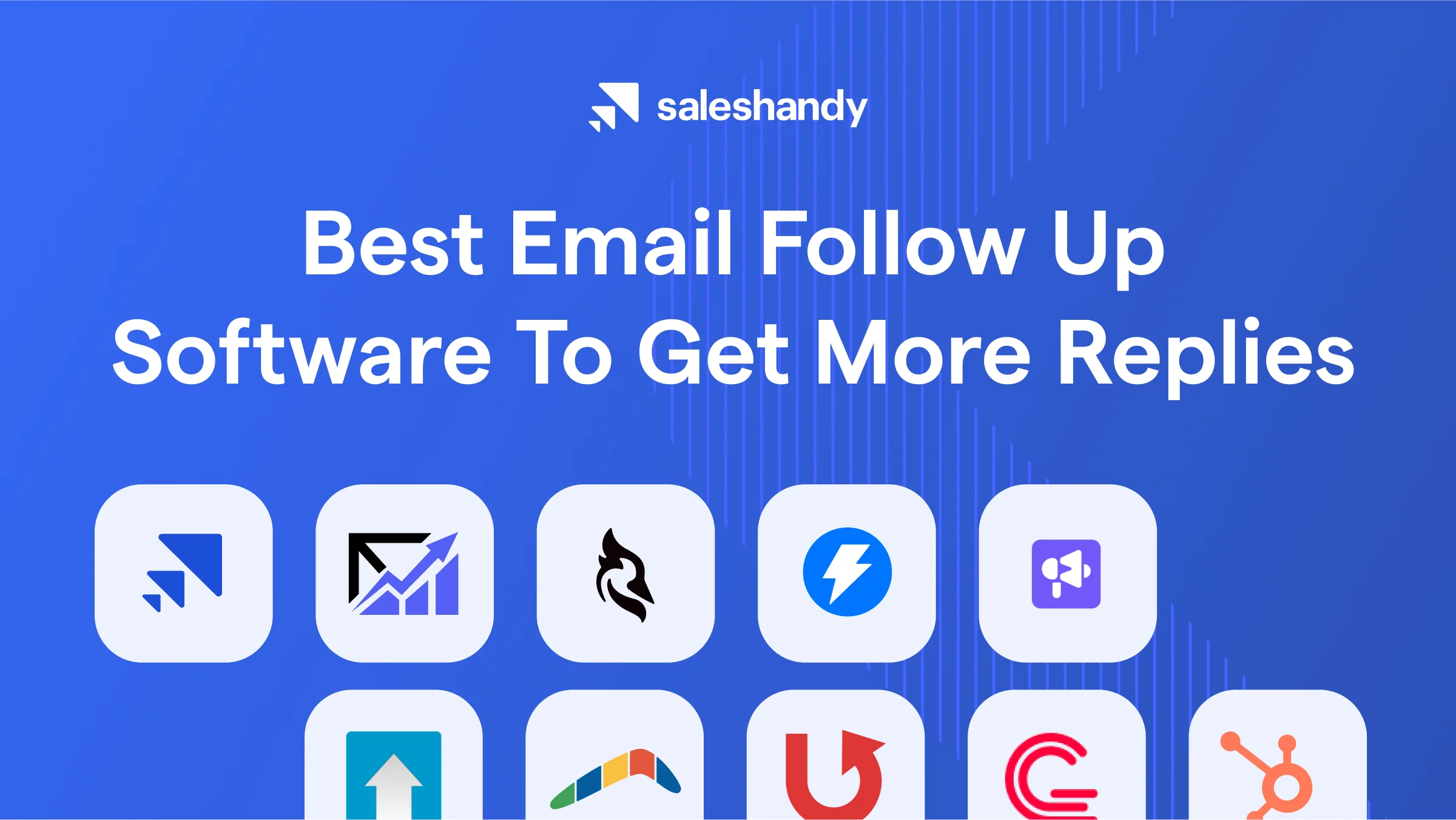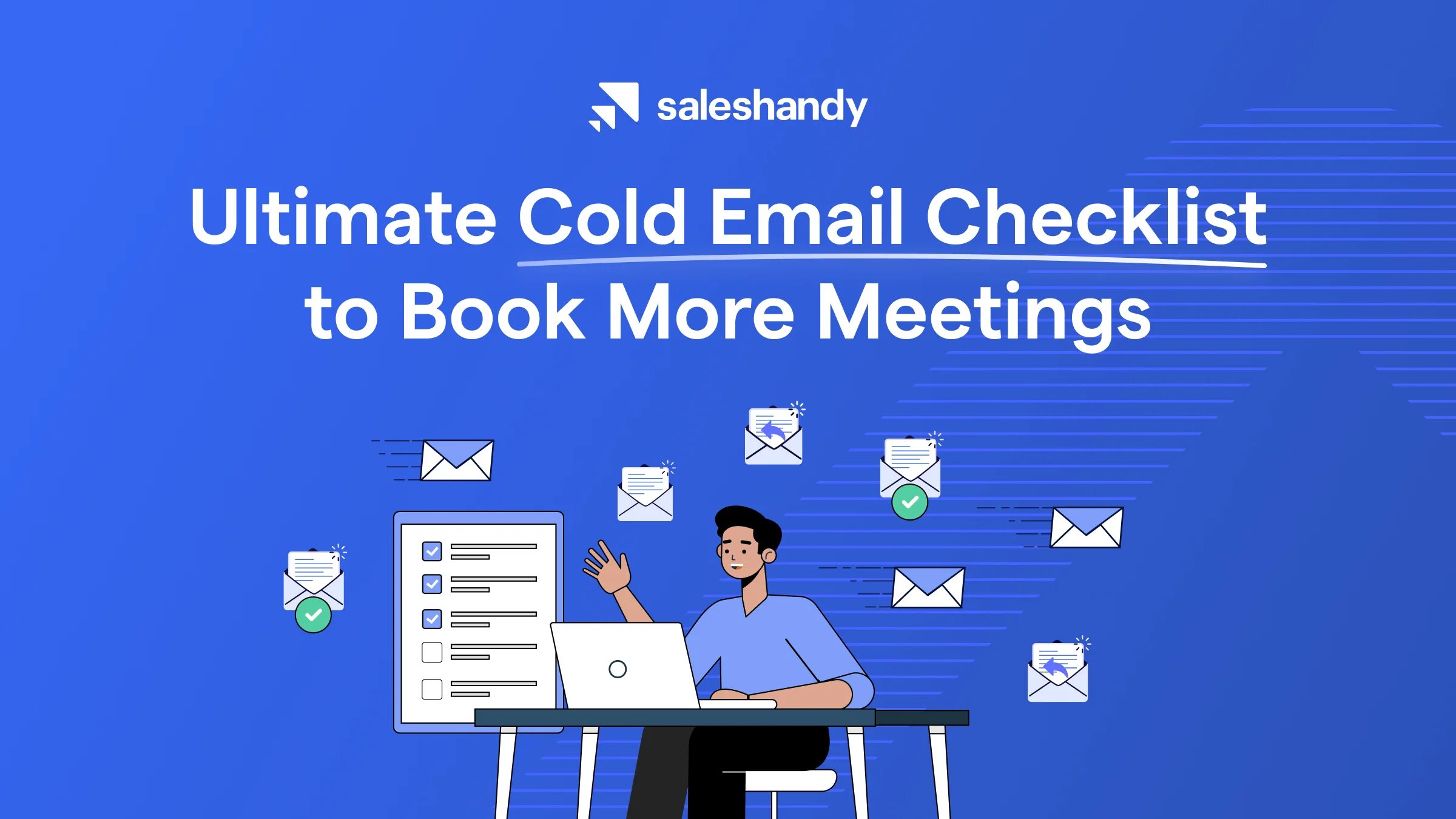Contents
There’s no getting around the havoc the COVID-19 has caused for businesses and our economy. It wiped out $6 Trillion from our market. A lot of businesses, big and small, were caught off guard due to drastic drop in demand. Keeping all that in mind, how do you conduct email outreach during COVID-19?
We understand that times like these can be tough not just on consumers, but businesses that employ people. People like us are directly-indirectly dependent on these businesses to make a living, so it’s incredibly important to bring back demand.
At this time, the most important thing for businesses like yours is to keep communicating with prospective customers and bring up their confidence. It is what will help you build deeper relationships over the long run.
Addressing just this is why we’re laying out the groundwork for your next set of outreach campaigns during COVID-19. It would be easy to mess up your prospects with potential customers if you don’t get this right.
We’ve put in the effort to build 9 purposeful strategies for your sales email outreach amid COVID-19. It will help you connect, convince and convert leads into paying customers.
9 Strategies for COVID-19 email outreach campaigns
1. Avoid “selling” aggressively, practice empathy
It is crucial to realize the gravity of the situation your customers or prospects might be in, before jumping in to sell something to them. A lot of times, marketers and salespeople will keep communicating as if everything were normal.
Even under normal circumstances, the average American has it rough managing their schedules and adjusting to a healthy work-life balance. These challenges are only aggravated during the time of a pandemic when other pressures also pile up.
As a result, all the aggressive discounting and trying to sell looks really bad. There’s already some chatter in the business community regarding this practice, and it is not favored.
Because of this, leads are starting to respond less often to sales emails.

Source: Hubspot
What you need to take away from this is, don’t sell like you usually would. There’s a good chance your leads are not willing to purchase with the same kind of intent as they used to before. Instill confidence and help them out in your ways, before you can talk about your product. You should reach out as a partner and offer help, let your lead decide how to move forward.
Here’s an example of an email template that reflects that sentiment:
Subject Line: Setting up to win once the demand picks up post-COVID
Email body:
Hi Jane,
I can imagine how unpredictable things might be right now. Things have been volatile, and I’m currently talking to businesses out there that are having it worse than yours.
I reckon for a business like <customer company> demand might jump back stronger the next Qs? How prepared are you, either way?
Let’s put down a plan now, together.
I’ll be available for a quick 20 min call<calendar link>, and we’ll discuss Q3 sales and demand strategy for <customer company>.
It will turn out to be a massive advantage for you against any direct competitors as well.
Talk soon?
Best,
Jacob
2. Selling with accordance to current situations, nurture accordingly
With the current economic landscape in view, you’ll probably need to redo your offerings and pricing structure to suit the needs of your new customers. It has to work while keeping your internal revenue targets in mind. While the targets might be met, you could end up sacrificing short term cash flow from selling products with delayed payments and lower pricing. Similar to how companies have pivoted to survive, it’s a good idea to rethink your product and market strategy.
Accordingly, you should also consider tweaking your sales playbook. Nurturing leads during this time with the same methods you used last quarter won’t make any sense. Conditions have changed and so have your future customers’ problems. Companies are cutting down costs related to non-essential products and services. So your new playbook for sales nurturing has to focus on how your product could help your lead’s business, i.e., being essential.
3. Close in on low hanging fruits
If you have a good volume of inbound leads coming in – identify and qualify the ones with the most buying intent and close them first. A lot of inbound leads you get at this time might have urgent buying needs. Depending on how quickly they’re attended and onboarded, you’ll get some smooth closes.
The focus here should be to reduce the friction in the process of closing these leads. A lot of companies’ services are at capacity while operating with limited resources. Hence a painless, quick response from your side won’t go unnoticed. We’ve mentioned in one of our guides before how responding timely is crucial to your sales cycle.
Often, you might have to push these little harder (especially now) to complete a deal, since they might be busy themselves. If you believe a lead is a low hanging fruit and qualified, take all the steps necessary for them to close faster. It will help both the parties in achieving their business goals during these times.
4. Re-work the pipeline
With this situation we’re in, you’ll realize you have to take a different approach towards all the leads that are in your pipeline. You might have to add a new category of leads that are stagnant due to the current situation. You should reassess these leads for their standing in the deal. It will help you focus better on serving leads with buying intent vs. those who don’t, at least for now. One of the ways you can assess their buying intent could be by tracking their engagement on all email communication your send.
Choose leads that show promise and have buying intent, to engage further into the sales cycle. Parts of your new sales playbook should also include strategies to engage all the leads in your pipeline. Nurture everyone with relevant content and updates from your side throughout this period. It will keep the leads engaged and more comfortable to close when they’re ready to buy. You can run these campaigns on automation with tools like Saleshandy.
If you see a rise in the volume of inbound leads, your goal should be to focus on the leads that would materialize into closed deals in the short term. You might have to make changes to your qualification and prospecting workflows accordingly. You can identify these hot leads by looking at their email engagement data and responses.
5. Re-work engagement campaigns
As an extension of points above – the most significant execution you’ll have to complete will involve updating your outbound nurturing campaigns. In a recent data benchmark from Hubspot, it was clear how open rates on Marketing emails were going up.

Source: Hubspot
This points us to the nature of emails that will work the best in your favor. It makes sense to keep nurturing your leads with content specifically geared towards your product and industry. While they might not intend to buy from you currently, they would like to stay aware of the developments in industry concerning them.
At the same time, make sure you modify existing outgoing engagement campaigns to fit in context with current situations. Some of those might come across as insensitive and few companies have indeed made this mistake.
6. Personalize heavily
It is a general rule of thumb for sales emails, but it should be given more emphasis for COVID-19 email outreach. Dig deeper into leads that are engaging with your emails (by tracking opens, clicks, etc.) and then look into their business/industry to customize next stages’ content. It will help you differentiate yourself out from the other emails that go out to your lead. It increases the chances of a response, which in turn will help you move the lead to the next stage of the sales cycle. Mail merge tools can help you add personalized fields in emails and automate your outreach at the same time.
Some examples of personalized fields could include company name, product features and use cases relevant to the lead, specific pricing plans, external news sources relevant to the leads, etc. You could make up any number of these fields along with your email templates to create truly personalized emails that would really connect well and capture your leads attention.
You might also want to tailor the product offerings that you’re selling for leads and their businesses that are hit by the pandemic. Personalizing this step will make it easier for your leads to make a decision and close quicker. Personalized fields combined with templatized content will help you personalize your emails at scale and efficiency.
7. Share Success stories & aid in planning the next phases
This strategy primarily exists to help you lift your lead’s confidence in your product and their business. There are several businesses out there that have thrived during this tough time – which has to do with increased demand in specific industries. Find existing customers in your database that operate in those same industries and share their stories.
Make these stories part of new campaigns where you nurture your leads during COVID-19. These can be leads who’ve been in your pipeline since early 2020 or recently signed up. Either ways, sharing how well businesses are doing makes them feel more positive about their business outlook and your product. It will later result in engagements and conversions from these leads
Apart from this, if you know of customers or leads who’ve communicated regarding their business being in trouble – try and help them out in getting to the next phase. It could be to plan sales for next quarter, Go-To-Market for a new product, etc., or simply, connecting them with someone who could help. These leads might not buy from you now, but they might later, or refer people to you, in return for your gesture.
8. Campaigns to nurture closes after pandemic
If you have leads who’re stuck in the pipeline waiting to close once the pandemic is over – you shouldn’t forget about them yet. As mentioned in one of the points above – marketing email engagements are going up and your leads wouldn’t mind hearing from you. In this case, you should have a separate campaign of emails to be sent out to these customers as part of your COVID-19 email outreach.
Keep the leads up to date with how your company is operating. Share stories on how your product is helping customers during the pandemic. Keep a check on engagements and segment the leads that are engaging with these emails. You could qualify these engaged users quicker when they might be willing to buy finally.
9. Special measures for customers
You might have leads in the pipeline who’re waiting to buy but are on the fence regarding current market conditions and uncertainties related to it. While you should be really understanding of this and give them time to make their decision, it wouldn’t hurt to motivate them to close earlier. You can do this by offering discounts, revised payment schemes, priority support, etc.
You should be careful regarding your outreach with these offers – depending on how each lead responded in the past. Some of them might find it aggressive and insensitive; others might find it helpful and hopefully accept the offers. Your goal here should be to make it easier for your lead to make a decision, given there is buying intent.
Now that we’ve detailed all the strategies, we also have a bonus section with templates you can incorporate into your COVID-19 email outreach. These templates have been crafted by Sales experts at SalesHandy, intended to communicate the tone and strategies we’ve discussed in this article.
Examples of email outreach templates for COVID-19
1. Introductory mail to a new lead
Subject:
Improve sales productivity at <customer company> by <Value proposition>
Body:
Hi Jake,
Glad to see you download our whitepaper on Sales productivity.
Did you find the insights we put together in it helpful?
Since we’re navigating through tough times in the market, now’s a really good time to ramp up your Sales productivity.
I’m writing in to help you with just that - let's get on a 1-1 call and discuss where we could make small changes and improve your productivity.
We’ve helped businesses like yours get over 35% more productive - serving more customers and closing more deals. You can find and book my availability here.
If you have any questions, feel free to let me know.
Best,
XYZ2. Following up on planned closures before pandemic
Subject:
Markets picking up beginning of May
Body:
Hi Jake,
Since we talked last time, you were waiting for markets to get back to normal once we were out of the pandemic.
I just came across an <XYZ article> that’s forecasting demand in your space to shoot up in the next few weeks.
What do you think about this? If you guys are prepared for it, should we get back to our discussions?
I just wanted to help you guys time your re-entry better.
Hope you stay safe and healthy!
Cheers,
XYZ3. Outreach for reduced product usage
Subject:
Checking up on <customer company>’s <Engagement metric>
Body:
Hi Jake,
How are you guys doing?
I’ve noticed your <engagement metric> has been on a slight downward trend.
Are your leads responding during the pandemic?
We’ve been consulting with our customers about switching up their outreach for the current situation. All of them have improved their <Engagement metric> significantly with a few strategies and templates we’ve suggested.
Do you think we should get together to help you with <engagement metric>?
Let me know and I’ll make sure we’re on track to help you towards your Q3 targets.
Stay Safe and Healthy!
Best,
XYZ4. Planning closes after pandemic
Subject:
Extending the Contract closure towards next Quarter
Body:
Hi Jake,
You mentioned last time, you’re in a tight spot with regards to the contract. I wanted to make it easier for you to resume your operations post-pandemic.
I can understand how challenging it must be to keep everything together during these times.
My team’s decided to honor the same terms we’ve agreed on, post-pandemic, whenever you’re ready to restart.
If there’s anything else you might need to clarify, let me know.
I’ll follow up with more updates as we go.
Have a healthy and safe weekend!
Cheers,
XYZ5. Retaining recent cancellations
Subject:
Extending your <product> usage with re-worked pricing
Body:
Hi Jake,
I just saw a cancellation request submitted from your account. I can understand that conditions have changed and businesses like yours are adapting to this situation. However, I was curious to know if you’re letting go of <product> strictly for the financial commitment involved. If you think you still could really make use of <product> right now and can’t really commit to the pricing, I can help you out.
I’m working on a new pricing structure based exclusively on your product usage in a way you don’t have to commit to the same prices. Let me know if that’s something you’d be interested in.
Stay safe and cautious,
Best,
XYZConclusion
Your leads and customers expect you to help them with their business, rather than closing a deal during these times. You should genuinely take that up as your guiding principle for sales engagement while executing on the strategies listed above. You want your customers to stay with you and refer more leads to you once all of this is over.
Once the COVID-19 spree gets over, and businesses start their workflow, you can move ahead with a different email outreach strategy to boost your revenue and productivity.
Have you tried any COVID-19 email outreach strategies outside the ones we listed above?
How are your leads responding to your outreach?
Let’s discuss, leave your comments and suggestions down below.





